16 Black Artists Who Impacted Jazz Dance History
Jazz Acknowledgement: Jazz is born of Black American culture and its roots lie in the turbulent history of the African American experience. We acknowledge this history and recognize ourselves as guests in this form. We are inspired by and benefit from traditions born of a culture that is not our own. We strive to be respectful in honouring the roots and history of jazz, we dance with reverence for those who came before us, we dig deep to go forward, we strive to appreciate rather than appropriate.
This feature is a living blog post, that will be updated weekly throughout February, featuring a partial list of the countless Black Artists that timelessly impacted the art form. Though we are sharing this list throughout February in honour of Black History Month, we strive to ensure that an appreciation for their impact is shared continuously through our work.
ALICE BARKER (1912-2016) & THE SEPIA STEPPERS
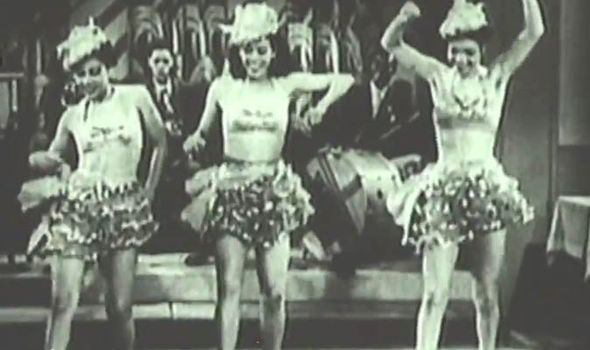
Alice Barker loved to dance from the moment she was born. As she says, dancing was all she ever wanted to do. She was born in Chicago, and left for New York City to become a dancer in her mid 20’s—which was quite a bold move for a woman in her time.
For her entire career she worked as a chorus line dancer in New York City, on Broadway and during the Harlem Renaissance of the the 1930s and 40s. She danced at clubs such as The Apollo, Cotton Club, and Zanzibar Club, where she was part of a legendary group known as the Zanzibeauts.
She also danced in numerous movies, commercials and TV shows with legends including Bill “Bojangles” Robinson, Gene Kelly, and a young Frank Sinatra.
The short musical films found of Alice are called “soundies,” and they were among the first films that used sound. Typically a soundie would be shot in a popular night club, and feature whatever the hot performer or song was at the time. The films would be distributed in jukebox-like devices that were placed in bars, clubs and racetracks, where people could watch them for a coin. (Excerpt from alicebarkernotbaker.com)
One of the most amazing and wonderful facts we were able to find in researching Alice, was that in the 1960s, she made an appearance dancing on The Frank Sinatra Show. Further digging shows that the Frank Sinatra Show ended in 1960, so it’s possible this was actually in the late 1950s instead. Based on this, Barker was one of the first African American dancers to appear on national prime time television.
The Sepia Steppers were an all female tap group who starred in a number of soundies in the 1940s. Based in NYC, their most famous soundies were Stepping Along, Toot That Trumpet, Poppin’ the Cork, Sweet Kisses, and Chatter – all from 1943.
The unconfirmed list of members found online: Ferebee Purnell, Nikki O’Daniel, Alice Barker, Jackie Lewis (sometimes listed as Jacqui Thompson), Partin Porton, Francine Everett (Excerpt from sisterkatedancecompany.com)
Sadly, there is not much more documented regarding Alice’s life, hers, like many of the other named and unnamed Sepia Steppers are stories that have been forgotten by history, but in the essence of this feature is the aim to remember and honour the impact their talents had on the development of the rich art form that is jazz dance.
LEARN MORE
THE NICHOLAS BROTHERS: FAYARD (1914-2006) & HAROLD NICHOLAS (1921-2000)
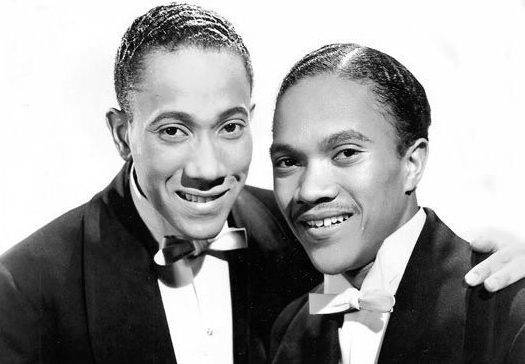
The brothers’ parents were both college-educated professional musicians. Their mother, Viola, was a classically trained pianist, and their father, Ulysses, was a drummer. They performed together in pit orchestras for Black vaudeville shows throughout the 1910s to the early 1930s, forming their own group called the Nicholas Collegians in the 1920s.
From the time Fayard was an infant, his parents brought him to the theatre for their practices and performances. There he gained an early education in show business by watching great Black entertainers such as the jazz musician Louis Armstrong, the dance team Buck and Bubbles, the singer Adelaide Hall, and the dance teams Leonard Reed and Willie Bryant and the Berry Brothers.Fayard taught himself how to dance, sing, and perform by watching the entertainers on stage. He then taught his younger siblings, first performing with Dorothy as the Nicholas Kids; they were later joined by Harold. When Dorothy opted out of the act, the Nicholas Kids became known as the Nicholas Brothers.
The crowning achievement of their work was preserved in the film Stormy Weather (1943), which had an all-Black cast. In it the brothers, suited magnificently in white tie and tails, dance on, over, and around the Cab Calloway Orchestra bandstands, dance side-by-side up a flight of stairs, leap onto a piano where they trade syncopated notes with the pianist, jump out onto the floor in full splits, dance up a divided stairway built of gigantic white stairs, meet at the top to exchange a few thrilling moves, and then leap into splits and slide down separate ramps, meeting once again on the dance floor to finish this dazzling routine with a crisp bow.
The Nicholas Brothers had begun their careers at a time when opportunities were few and stereotyped roles the norm for Black actors and entertainers. To their credit, however, the Nicholas Brothers rose above this marginalization and, with a sense of dignity and a style all their own, earned the respect of generations of tap dancers and audiences the world over. (Excerpt from britannica.com)
LEARN MORE
DIANNE WALKER
(BORN 1951)
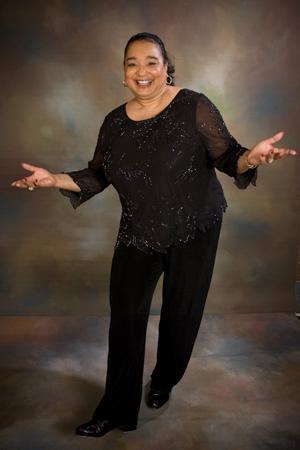
Dianne Walker, jazz tap dancer known for her elegant and fluid style of dancing that is delicate yet rhythmically complex, was born in Boston, Massachusetts. At age fifteen-months, she contracted polio and spent three months in the hospital and several months in quarantine. When she was released, for the proper exercise of her legs, she was sent to study dance with Ethel Covan, whose forte was ballet, but little Dianne’s interest was tap. At age of seven she was referred to Mildred Kennedy (Bradic) who ran the Kennedy Dancing School in Boston, and whose first teacher was Doris Jones, whose Jones-Haywood School of Ballet gave black youngsters in Washington, D.C., the chance to study classical ballet.
In 1982, Collins & Company was founded with Collins, C. B. Hetherington, Pamela Raff, Dianne Walker, and pianist Joan Hill. That same year, Walker attended Jane Goldberg’s By Word of Foot II (1982) festival in New York City, and was disappointed to see the paucity of black dancers. She returned to Boston with the intent of teaching and helping to revive the form for the young (young blacks included).
For young blacks in Boston in the 1980s, inculcated with the new rap and hip-hop with little understanding of their roots to jazz, the inspiration of jazz tap was not there. Still, Walker was indeed impressing some young dancers. In 1982, Cab Calloway’s band played in Boston on a promotional tour of George Niremberg’s new documentary film, No Maps On My Taps, with the film’s star dancers Chuck Green, Sandman Sims and Bunny Briggs. Walker was asked to find three young dancers who could portray each of the veteran hoofers and perform with them; she the eight-year-old Derick Grant (Sims), Dwayne Jones (Green), and Rashan Burroughs (Briggs). Grant would become a principal dancer with the Jazz Tap Ensemble (1992-2008); star in the Broadway and touring production of Bring in Da Noise, Bring in Da Funk (1997); and conceive and choreograph the full-length tap musical Imagine Tap! (2006).
Given the star power that she exuded in that one-chorus 50-second solo, Walker seemed be a relative newcomer to the tap resurgence scene– even while getting notices in tap shows that she was not in. When she made an appearance at the after-show jam session of Sole Sisters (1985, Greenwich House, New York City), for instance, Jennifer Dunning in the New York Times described Walker as “a tapper from whom steps and moves flow like music, she has an easy warmth of presence that makes her dancing incandescent.” Walker was not a modern dancer, a tap choreographer, a director of a tap company, or a guest artist in other companies, but she was nevertheless ubiquitous in the 1980s. As a black woman, she was committed less to making “art” than to making social connections with the young generation of African-American dancers who had not yet been ignited by the resurgence of (black) rhythm tap.
Walker is considered by many female black tap dance artists as the transitional figure between the young generation of female dancers– such as Dormeshia Sumbry-Edwards, Germaine Ingram, Ayodele Casel– and the “forgotten black mothers of tap,” such as Edith “Baby” Edwards, Jeni LeGon, Lois Miller, and Florence Covan. The opportunities (for service to the field) that opened in the mid-1980s positioned Walker as the link from the old to the young, the “transitor” in passing on the rhythms and musicality of the old generation. She was also considered the griot, the holder of the classical black rhythm “canon,” bestowed on her when she worked as principal dancer in the Paris production of Black and Blue, as well as principal and assistant choreographer in the Broadway production. That show is today considered the quintessential black-rhythm tap musical of the century. (Excerpt from memory.loc.gov)
Frank, tell-it-like-it-is, unafraid to upset multiple factions—the line was as characteristic of Walker as the sound of her taps. But it also expressed a personal truth. Again and again over the years, she said that it had been men like Leon Collins and Jimmy Slyde who had inspired her, their sense of style and musicality. They had told her, (as she recalled) “Hit it, but don’t hit it like us, girlie.” How she had taken their advice and example to heart was evident every time she danced. No one, enjoying the dancing of Lady Di, could think of the heights of tap artistry as a place only for men. (Excerpt from danceinteractive.jacobspillow.org)
LEARN MORE
MABEL LEE
(1921-2019)
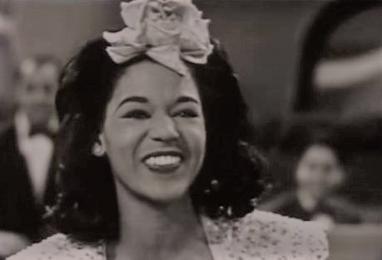
Mable Lee, the sassy chanteuse and jazz dancer with the million-dollar legs who was regaled in the 1940s as “Queen of the Soundies,” was born in Atlanta, to Rosella Moore and Alton Lee. She was a child prodigy who began performing at the age of four; at the age twelve, she was performing in the first black-owned nightclub in Georgia, The Top Hat.
After touring France, Belgium, Ireland, and Scotland, Lee returned to New York to do booking auditions, raise $350,000 for, and star in the Broadway revival of Noble Sissle and Eubie Blake’s all-black jazz-age musical Shuffle Along (1952); in which she sang “Craving for That Kind of Love” and “You Ain’t Been Vamped ‘til You’ve Been Vamped by a Brownskin.” She also sang with Eubie Blake on his album Eubie Blake and His Girls (1960) making popular again the hit song “You Got to Git the Gittin,’ While the Gettin’s Good.”
The year 1960 was also another blessed year for Lee, who gave birth to a son, Michael, who was born in Georgia (on April 13, 1960) would grow up to writes music, form a band, write plays, and sing in the choir of the church Mabel had belonged to. In 1969, she was the only woman to perform with Chuck Green, Lon Chaney, and James Buster Brown in The Hoofers, which opened at the Mercury Theater to rave reviews. She performed in the leading role of Irene in the national touring production of the Broadway musical hit Bubblin’ Brown Sugar (1976); with Honi Coles, who went out as a “time man,” changed scenes while tapping and was understudy to the lead Vernon Washington (in the role of Sage). After getting standing ovations for her soft shoe dancing in the AMAS Repertory Theater’s production of Suddenly the Music Starts, Lee was nominated for an Audelco Award for Outstanding Musical Performance. In 1985, She received a grant from the National Endowment for the Arts to make master dance videos on teaching vintage chorus line routines and other fundamentals of chorus line work.
Since 1999, Lee has performed regularly in National Tap Dance Day’s Tap Extravaganza, where she was honored with a Flo-Bert Award for lifetime contribution to tap dance. Like many performers from her generation, Lee has achieved that rare level of “entertainment” that identifies a true performer– but she has one-upped on it.
(Excerpt from memory.loc.gov)
LEARN MORE
PEARL PRIMUS
(1919-1994)
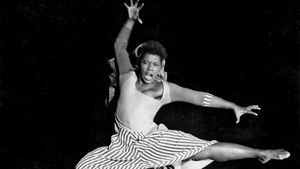
Pearl Primus, dancer and choreographer, was born in Trinidad. Her parents, Edward and Emily Primus, immigrated to the United States in 1921 when Pearl was still a small child.
Primus was raised in New York City, and in 1940 received her bachelor’s degree in biology and pre-medical science from Hunter College. However, her goal of working as a medical researcher was unrealized due to the racial discrimination of the time. When she went to the National Youth Association (NYA) for assistance, she was cast as a dancer in one of their plays. Primus’s promise as a dancer was recognized quickly, and she received a scholarship from the National Youth Association’s New Dance Group in 1941.
In 1948 Primus received a federal grant to study dance, and used the money to travel around Africa and the Caribbean to learn different styles of native dance, which she then brought back to the United States to perform and teach. She also choreographed dances that contained messages about racism and discrimination. One of her dances, Strange Fruit, was a protest against the lynching of blacks.
Eventually Primus formed her own dance troupe which toured the nation. She also opened a dance school in Harlem to train younger performers. In 1953 Primus returned to Trinidad to study dance there, and met her husband, Percival Borde. They married, and had one son together who also showed promise as a dancer. In 1958 at the age of 5, he made his professional debut and joined her dance troupe.
Pearl Primus continued to teach, choreograph, and perform dances that spoke of the human struggle and of the African American struggle in a world of racism. In 1978, she completed her doctoral degree in dance education at New York University’s School of Education. Also by this point her dance school, the Pearl Primus Dance Language Institute, was well known throughout the world. (Excerpt from blackpast.org)
LEARN MORE
JOSEPHINE BAKER
(1906-1975)
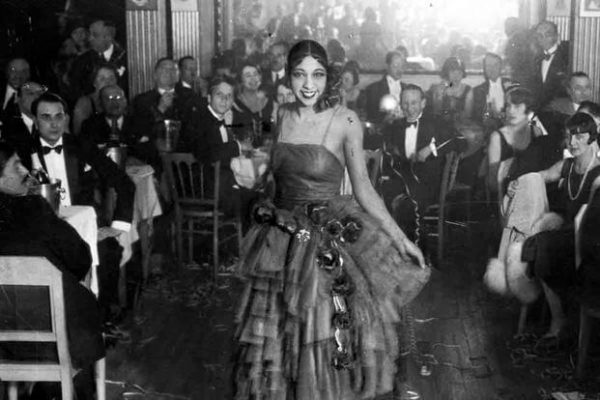
Born Freda Josephine McDonald in St. Louis, Missouri, on June 3, 1906 to washerwoman Carrie McDonald and vaudeville drummer Eddie Carson. She got a job waitressing at The Old Chauffeur’s Club when she was 13 years old. While waiting tables she met and had a brief marriage to Willie Wells. While it was unusual for a woman during her era, Josephine never depended on a man for financial support. Therefore, she never hesitated to leave when a relationship soured. She was married and divorced three more times: to American Willie Baker in 1921 (whose last name she chose to keep), Frenchman Jean Lion in 1937 (from whom she attained French citizenship), and French orchestra leader Jo Bouillon in 1947 (who helped to raise her 12 adopted children).
Josephine toured the United States with The Jones Family Band and The Dixie Steppers in 1919, performing various comical skits. When the troupes split, she tried to advance as a chorus girl for The Dixie Steppers in Sissle and Blake’s production Shuffle Along. She was rejected because she was “too skinny and too dark.” Undeterred, she learned the chorus line’s routines while working as a dresser. Thus, Josephine was the obvious replacement when a dancer left. Onstage, she rolled her eyes and purposely acted clumsy. The audience loved her comedic touch, and Josephine was a box office draw for the rest of the show’s run.
Her career thrived in the integrated Paris society; when La Revue Nègre closed, Josephine starred in La Folie du Jour at the Follies-Bergère Theater. Her jaw-dropping performance, including a costume of 16 bananas strung into a skirt, cemented her celebrity status. Josephine rivaled Gloria Swanson and Mary Pickford as the most photographed woman in the world, and by 1927, she earned more than any entertainer in Europe. She starred in two movies in the early 1930s, Zou-Zou and Princesse Tam-Tam, and moved her family from St. Louis to Les Milandes, her estate in Castelnaud-Fayrac, France.
A 1936 return to the United States to star in the Ziegfeld Follies proved disastrous, despite the fact that she was a major celebrity in Europe. American audiences rejected the idea of a black woman with so much sophistication and power, newspaper reviews were equally cruel (The New York Times called her a “Negro wench”), and Josephine returned to Europe heartbroken.
Josephine served France during World War II in several ways. She performed for the troops and was an honorable correspondent for the French Resistance (undercover work included smuggling secret messages written on her music sheets) and a sub-lieutenant in the Women’s Auxiliary Air Force. She was later awarded the Medal of the Resistance with Rosette and named a Chevalier of the Legion of Honor by the French government for hard work and dedication.
Josephine visited the United States during the ‘50s and ‘60s with renewed vigor to fight racism. When New York’s popular Stork Club refused her service, she engaged a head-on media battle with pro-segregation columnist Walter Winchell. The National Association for the Advancement of Colored People (NAACP) named May 20 Josephine Baker Day in honor of her efforts.It was also during this time that she began adopting children, forming a family she often referred to as “The Rainbow Tribe.” Josephine wanted her to prove that “children of different ethnicities and religions could still be brothers.” She often took the children with her cross-country, and when they were at Les Milandes, tours were arranged so visitors could walk the grounds and see how natural and happy the children in “The Rainbow Tribe” were.
Josephine agreed to perform at New York’s Carnegie Hall that same year. Due to previous experience, she was nervous about how the audience and critics would receive her. This time, however, cultural and racial growth was evident. Josephine received a standing ovation before the concert even began. The enthusiastic welcome was so touching that she wept onstage.
On April 8, 1975, Josephine premiered at the Bobino Theater in Paris. Celebrities such as Princess Grace of Monaco and Sophia Loren were in attendance to see 68-year-old Josephine perform a medley of routines from her 50 year career. The reviews were among her best ever. Days later, however, Josephine slipped into a coma. She died from a cerebral hemorrhage at 5 a.m. on April 12.
More than 20,000 people crowded the streets of Paris to watch the funeral procession on its way to the Church of the Madeleine. The French government honored her with a 21-gun salute, making Josephine Baker the first American woman buried in France with military honors.
(Excerpt from cmgww.com)
LEARN MORE
EARL SNAKEHIPS TUCKER
(1906-1937)
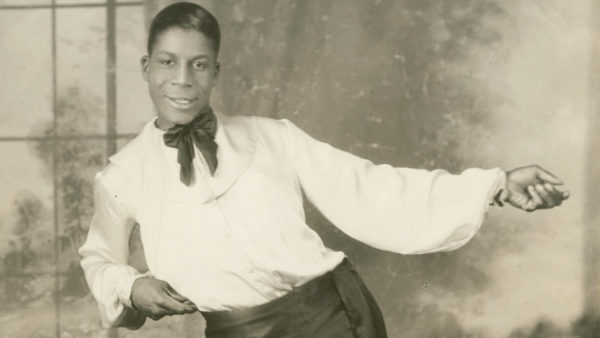
Earl Snakehips Tucker was an American dancer and entertainer. Also known as the “Human Boa Constrictor”, he acquired the nickname “snakehips” via the dance he popularized in Harlem in the 1920s called the “snakehips”.
Tucker frequented Harlem music clubs and was a regular at the Savoy Ballroom. He built his reputation by exhibiting his odd style of dance, which involved a great deal of hip motion. Tucker would make it appear that he was as flexible as a snake, and eventually, the dance became his calling card. He became popular enough to eventually perform at Connie’s Inn and the Cotton Club. The snakehips dates back to southern plantations before emancipation.
Riding this wave of popularity, in 1930 he appeared in Benny Rubin’s 16-minute short film Crazy House, a comedic introduction to residents at the fictitious “Lame Brain Sanitarium”. Tucker’s 2-minute dance number, performed in a shiny white shirt and shiny, baggy gold pants, displays his amazing dance innovations, his style a precursor to modern street and stage dance. (Excerpt from wikipedia.org)
LEARN MORE
JOHN BUBBLES
(1902-1986)
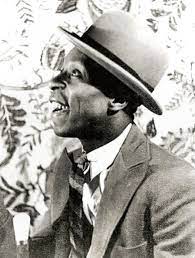
John Bubbles revolutionized tap dance as the first tapper to drop his heels. By using his entire foot (heel and toe), he created rhythmically complex and syncopated footwork while maintaining a relaxed upper body. Today, we call this style rhythm tap.
Born John Sublett in Louisville, Kentucky, in 1902, Bubbles started performing at age 7. Though he had no formal training, he sang, told jokes and danced. In 1918, he teamed up with Ford Lee “Buck” Washington to fill a last-minute gap in a vaudeville show. Their musical comedy act “Buck and Bubbles” became a hit, and they remained together for nearly 40 years.
After some time on the vaudeville circuit with Buck, Bubbles’ voice changed, so he shifted his focus from singing to tap dancing. He first tried his luck at the Hoofers Club in Harlem, but he was laughed off the stage. A few years later, armed with the heel-dropping, improvised style he’d been crafting on the road, he came back and blew everyone away.
With Buck, Bubbles broke racial barriers. In 1931, they became the first African-American duo to play at Radio City Music Hall and the second to be featured in the Ziegfeld Follies. In 1935, George Gershwin invited Bubbles to originate the role of Sportin’ Life in the opera Porgy and Bess. In the 1940s, he made appearances in several Hollywood films, including the all-black musical Cabin in the Sky (1943).
Bubbles’ unique style laid the groundwork for tap dance of the future. Among those he influenced directly were Fred Astaire, tapper and actress Eleanor Powell and Chuck Green of the vaudeville duo “Chuck and Chuckles” (whose act closely resembled “Buck and Bubbles”). Today, tap dancers like Jason Samuels Smith and Savion Glover use Bubbles’ approach to syncopation, improvisation and complexity.
LEARN MORE
KATHERINE DUNHAM
(1909-2006)
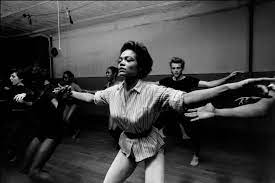
Katherine Dunham revolutionized American dance in the 1930’s by going to the roots of black dance and rituals transforming them into significant artistic choreography that speaks to all. She was a pioneer in the use of folk and ethnic choreography and one of the founders of the anthropological dance movement. She showed the world that African American heritage is beautiful. She completed groundbreaking work on Caribbean and Brazilian dance anthropology as a new academic discipline. She is credited for bringing these Caribbean and African influences to a European-dominated dance world.
Dunham’s first school was in Chicago. In 1944 she rented Caravan Hall, Isadora Duncan’s studio in New York, and opened the K.D. school of Arts and Research. In 1945 she opened the famous Dunham School at 220 W 43rd Street in New York where such artists as Marlon Brando and James Dean took classes.
Katherine Dunham is credited for developing one of the most important pedagogues for teaching dance that is still used throughout the world. Called the “Matriarch of Black Dance,” her groundbreaking repertoire combined innovative interpretations of Caribbean dances, traditional ballet, African rituals and African American rhythms to create the Dunham Technique. Her dance troupe in venues around the world performed many of her original works which include: Batucada, L’ag’ya, Shango, Veracruzana , Nanigo, Choros, Rite de Passage, Los Indios, and many more. (Excerpt from: kdcah.org)
LEARN MORE
AL MINNS & LEON JAMES
(1920-1985) & (1913-1970)
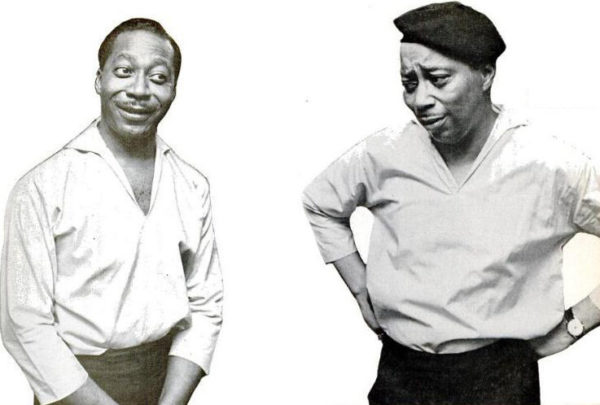
Albert “Al” Minns and Leon James were both Savoy Ballroom dancers in Harlem, New York, and were members of the famous Lindy Hop group, Whitey’s Lindy Hoppers.
Throughout the 1930s and 40s they performed on stage and film. You can see Al Minns dancing in Hellzapoppin (1941) and Hot Chocolates (1941). You can see Leon James dancing in A Day At The Races (1937), the Cootie Williams & His Orchestra soundie (1943), and Boy What a Girl (1947).
They named themselves “The Jazz Dancers”, specialists in the history of authentic jazz dances. They were both filmed extensively as part of Mura Dehn’s The Spirit Moves documentary in the early 50s. They also worked together with dance historian Marshall Stearns in the 1960s, and appeared in a number of television specials with Dr. Stearns, including on Dupont Show of the Week (1961) and on Playboy Penthouse (1961). These appearances are part dance history lecture by Marshall Stearns, part demonstration by Al and Leon.
Al and Leon were significant in keeping jazz dance alive, by performing it into the 1950s and 1960s on stage and television, and continuing to teach classes in New York City, when most of Whitey’s Lindy Hoppers had retired. Leon James sadly passed away in 1970, but Al Minns continued dancing and teaching into his sixties, and was an important part of the swing revival in the 1980s. (Excerpt from: hollajazz.com)
LEARN MORE
DOROTHY DANDRIDGE
(1922-1965)
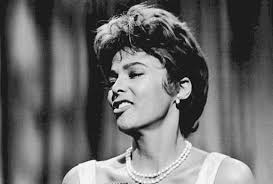
Dorothy Jean Dandridge was a Black actress, singer, dancer, and entertainer from Cleveland, Ohio, her mother was an aspiring actress named Ruby Dandridge. Ruby had left Dorothy’s father, moved into an apartment with a friend, (Geneva Williams) who became instrumental in teaching Dorothy and her sister singing, dancing, and piano. They moved to Nashville and were signed with the National Baptist Convention to tour churches throughout the southern states. The Great Depression put a halt to progress and they moved to Hollywood. The Dandridge Sisters, as they were known received an unaccredited cameo in the film The Big Broadcast of 1936. They also played the Cotton Club where they were a hit and soon toured Europe.
When Dandridge heard that an all-Black production of Carmen Jones was being planned, she knew this was the role she had dreamed of. The project was the mastermind of Austrian director Otto Preminger. (Excerpt from:aaregistry.org)
Carmen Jones became a worldwide success, eventually earning over $10 million at the box office and becoming one of the year’s highest-earning films. Dandridge was nominated for an Academy Award for Best Actress, becoming the first African-American nominated for a leading role. At the 27th Academy Awards held on March 30, 1955, Dandridge shared her Oscar nomination with Grace Kelly, Audrey Hepburn, Judy Garland, and Jane Wyman. Although Kelly won the award for her performance in The Country Girl, Dandridge became an overnight sensation. (Excerpt from: wikipedia.org)
LEARN MORE
LEARN EVEN MORE
NORMA MILLER
(1919-2019)
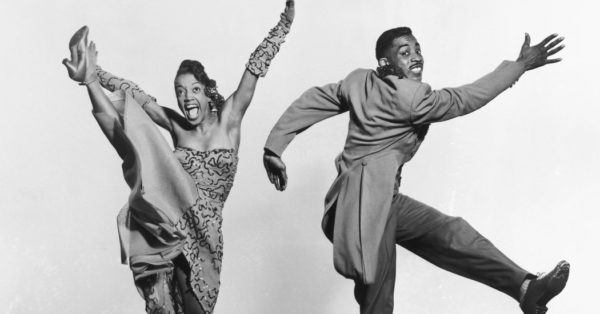
Norma Miller was a Black lindy hop dancer, choreographer, actress, author, and comedian known as the “Queen of Swing”.
She was was born in Harlem, New York into mother Alma and father Norman, a soldier, both from Bridgetown, Barbados.
On Easter Sunday in 1932, when Miller was 12 years old, she was dancing outside the Savoy Ballroom, too young to enter. She was approached by George “Twist Mouth” Ganaway, “the greatest dancer at the Savoy,” who was impressed with her dancing. Twist Mouth asked Miller to immediately be his partner in a competition occurring in the ballroom, which they won before Miller was escorted back outside. Later that year, Miller entered the Savoy Lindy Hop Contest, held at the Apollo Theater. Miller entered with one of her high school friends, Sonny Ashby, and they won the contest. The performance prompted Herbert “Whitey” White, the dance master at the Savoy, to ask Miller to join his group, Whitey’s Lindy Hoppers.
She was hired in 1934 at age 15, the youngest member of the group. (Excerpt from:aaregistry.org)
LEARN MORE
ASADATA DAFORA
(1890-1965)
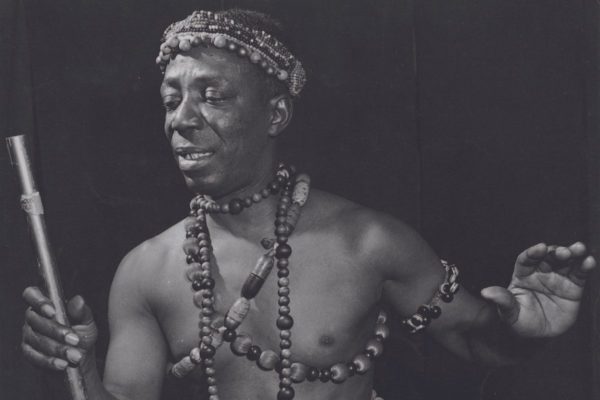
Asadata Dafora was one of the first Africans to introduce African drumming music to the United States.
As a young man, Dafora traveled to Europe and studied at several opera houses in Italy to advance his musical training, learning English. French. Spanish. German and Italian. His crossover from choral music into the medium of dance happened when he went to a performance of West African songs in a German nightclub in 1910, and overwhelmed with homesickness, he broke out into traditional African dance. His performance was so well received that the club owner contracted him to train a group of dancers. While touring with his dance troupe, Dafora was struck by how ignorant most people were about Africa and dedicated the rest of his career to exposing people to African culture.
In 1929 Asadata Dafora came to New York City to try to pursue his career as a musician. He was then 39 years old. Despite his talent, at the start of the Great Depression creative performing careers were difficult to maintain, particularly for foreign African performers. However, his interactions with a group of African men at the National African Union soon led him back to his interests in African dance. The company he formed was called Shogolo Oloba (sometimes known as the Federal Theater African Dance Troupe and Asadata Dafora Horton and his African Dancers) and it strove to portray African culture in a complex and sophisticated light, not just an exotic array of mysterious spectacles. (Excerpt from:aaregistry.org)
Asadata’s legacy can be felt if you’ve ever had the privilege of dancing along with African drums, the experience is truly unique. We believe incorporating this experience as part of jazz training to be crucial.
LEARN MORE
FRANKIE MANNING
(1914-2009)
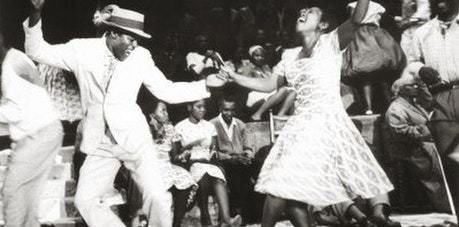
Although legendary Lindy hopper Frankie Manning passed away in 2009, his spirit lives on in the hearts and souls of swing dancers around the world. Frankie is remembered and revered for his vital role in the history and revival of swing dancing, as well as for his radiant and charismatic personality. His legacy is hugely important and widely influential. Frankie’s deepest wish was that swing dancing live on. Inspired by their hero, enthusiasts around the globe are devoting themselves to this mission. New swing dance organizations are springing up everywhere and established scenes are growing. (Excerpt from frankiemanning.com)
The DJD company had the privilege of working with Frankie in 1999.
LEARN MORE